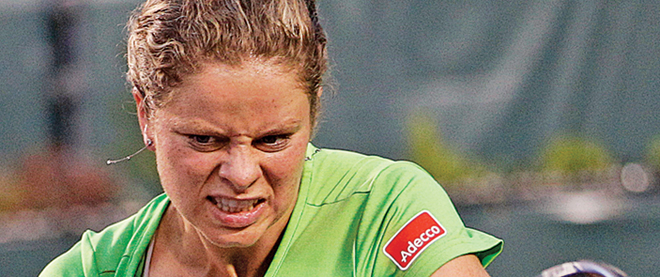Why women’s tennis needs more superstars
A good old-fashioned rivalry at the top could provide a real boost to the next generation of stars
Andre Chaco/FotoArena/Getty Images
Share

Wanted: one, preferably two, dominant and consistent female tennis players. Someone who can handle being the centre of attention (if only for a couple of hours every few weeks), is able to withstand high-pitch screams or grunts, and is capable of winning at least one grand slam title a year. Please inquire within, at the Women’s Tennis Association.
If only it was that easy for the WTA to find a couple of big-name superstars. While young phenoms are replacing veterans in every other sport, it seems women’s tennis is having a tougher time with the changing of the guard. Former No. 1 players like Serena and Venus Williams and Kim Clijsters aren’t ready to retire just yet. But their tournament appearances are limited because of injuries or non-tennis commitments. At a time when the men’s game is exceptionally competitive and exciting—thanks to the three-ring circus starring Novak Djokovic, Rafael Nadal and Roger Federer—the women’s side, as legendary coach Nick Bollettieri has put it, needs a little “pizzazz.”
These days, any number of players can win a tournament on any given week. Some say the parity is a good thing, but one of the results of having such a wide open field is the lack of a natural leader. One player who’s benefited from her youth, good health and availability is Caroline Wozniacki, the current No. 1. She has held that spot every week but one since October 2010. As impressive as that is for a 21-year-old, Wozniacki’s resumé is still missing a grand slam title. The closest the Dane has come to winning one was the 2009 U.S. Open, where she lost to Clijsters in the final. Regardless of how many titles she holds—17 so far—or how consistent she plays at regular events, until she wins a major, she’ll lack the household-name status of Venus or Serena.
Maybe all Wozniacki needs is a rival. Even some of the biggest names in the sport agree that a good old-fashioned rivalry would give the game a real boost. “That’s what women’s tennis really needs and men’s tennis doesn’t lack,” said Maria Sharapova, currently ranked fifth in the world. “Rivalries are exciting for me and for the sport.” And they can push athletes to that next level, helping attract and hold the attention of fans.
Looking back at the great female tennis stars of the last couple of decades, it’s no surprise that the names often come in pairs. Between 1973 and 1980, Martina Navratilova and Chris Evert stared each other down 60 times in the finals. It was one of pro sports’ all-time greatest rivalries. Then, from the late ’80s into the ’90s, fans could often count on epic battles when Steffi Graf faced off against Monica Seles. For three years—1991, ’92 and ’93—one or the other won every single slam.
Then along came the Williams sisters. The two have combined to win 20 slams. And in eight of those finals, the sisters have been on the opposite side of the net. While an all-Williams match-up didn’t always translate into the highest level of tennis, it was always compelling to watch. But Serena and Venus, 29 and 31 respectively, don’t play nearly as much as they once did. Unfortunately for Serena, competing was not an option this year. Her ranking plummeted after foot injuries and a life-threatening pulmonary embolism kept her off the court for 49 weeks. When Serena—ranked 79th in the world—won the Bank of the West title in Stanford, Calif., on Sunday, it was her first win, and only her third tournament appearance, since Wimbledon in 2010.
It’s hard to develop a rivalry when the players face each other so infrequently. Mary Carillo, a former pro turned TV analyst, says that “one of the great glories of men’s professional tennis is how often these guys meet. It is not just in the majors. That does not happen enough in women’s tennis.” Carillo adds: “If you do not have rivalries you lose an awful lot of casual interest in your sport.”
The WTA is doing their part to generate attention. In May, it unveiled a new global ad campaign, with the tag line: “Strong is beautiful.” It features 38 current and next-generation stars, including the top three—Wozniacki, Clijsters and Vera Zvonareva. The plan is to promote the women and the sport all over the world. Given how diverse the players’ backgrounds are, it’s a great way to reach out to non-traditional tennis markets. But will it be enough to hold the casual fans’ attention if the stars are only showing up in the commercials and not on the courts?
That said, with still a few months left in the 2011 season, Serena, Clijsters and Sharapova are back from injuries, promising a wild finish—perhaps even a shuffle near the top of the rankings. Maybe the veterans will bring back some of that “pizzazz.”